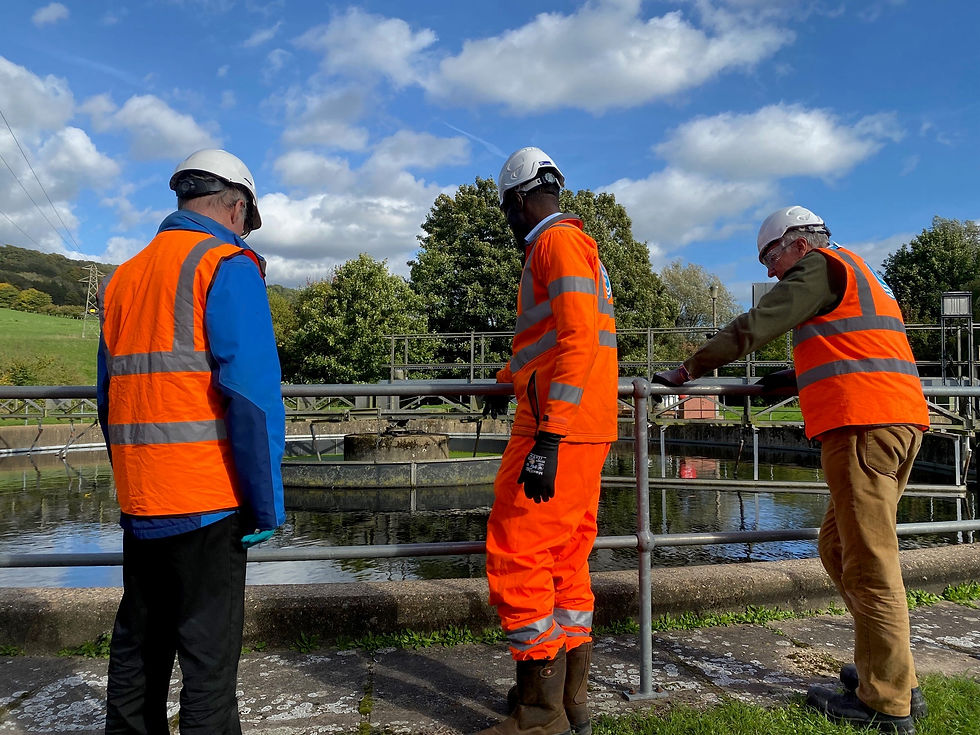Visit to Dorking Sewage Works
- Jul 26, 2023
- 2 min read
Updated: Jul 31, 2023
In October 2022, Thames Water gave a group of us a tour of the sewage works to explain how they treat our waste water. It wasn't as smelly as I thought it might be! It was very interesting to see the process from the start where our sewage enters the works, to where it ends discharging 'clean' water into the river Mole. It gave me a better understanding of the problems they have to deal with. But we can help by using less water, definitely not putting anything apart from toilet paper down the loo, and at times of extreme rainfall events use less water to minimise the amount going to the treatment works.

Screening removes large objects that may block or damage equipment or pollute rivers. This includes items that should never have been put down the drain in the first place, such as nappies, wet wipes, sanitary items and cotton buds, and sometimes even things like bricks, bottles and rags. Special equipment filters out grit, as this often washes into the sewer with wastewater.

Storm water overflow tanks hold screened waste water during high rainfall events which can later be processed through the sewage works. The structure allows for the settlement of solids which can be cleaned out. If the rainfall is too high and they run out of storage capacity, resulting liquids will have to go straight into the river Mole. It is these spills which cause pollution events.

Wastewater still contains organic solid matter – otherwise known as human waste. the waste is separated from the water by putting it into large settlement tanks, where solids sink to the bottom. The settled solids are called ‘sludge’. Large arms or scrapers help to push the sludge towards the centre, where it’s then pumped away for further treatment.
The cleaner water passes over a wall near the top of the tank ready for the next stage of the treatment process. The solids are dried and taken off site to be used for biofuels.

Wastewater is pumped into a rectangular tank called ‘aeration lanes’, which pump air into the water. This encourages the useful bacteria to break down and eat the harmful bacteria. The more the useful bacteria eat, the more they grow and multiply, until all the nasty bugs have gone.

The treated wastewater passes through a final settlement tank, where the useful bacteria sink to the bottom. This forms more sludge, which we recycle back to the secondary treatment stage. The clean water then passes over a wall near the top of the tank to the outfall into the river Mole.





Comments